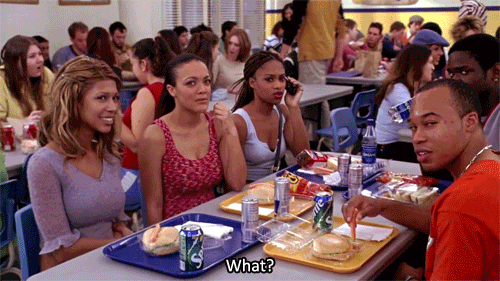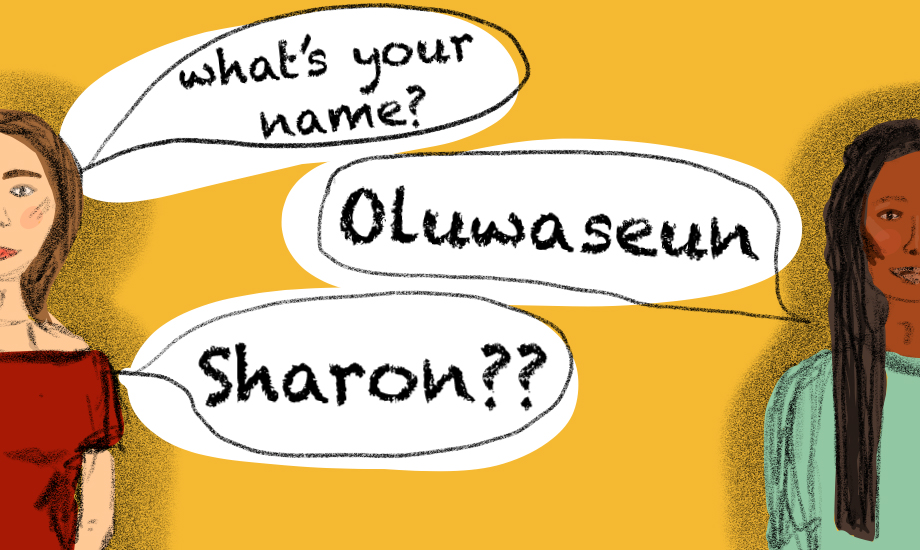
Why are white people threatened when people of colour form a friendship group?
Precious McCarthy
04 Sep 2019
Image via Mark Waters / Paramount Pictures
Thanks to the cult film Mean Girls, the popular phrase “you can’t sit with us” has earned its place in the hearts of a generation. Cemented in popular culture, it became our harmless go-to when throwing quick verbal jabs at friends. But imagine being pulled aside by your colleague and hearing “you can’t sit together”.
For some of us, we enter the workplace ready to leave those Mean Girls-shaped adolescent years behind and begin transitioning into the most adult versions of ourselves. Instead, sometimes we’re met with the high school-esque work politics of favouritism, adults bullying adults and other aggressive behaviours we thought we’d left behind in our school years.
One extremely concerning experience for many people of colour is being reprimanded or criticised for the friendship groups we form at work. I hadn’t realised that this was even a common experience until I started speaking to friends about it, and then went through it myself.
One friend of mine worked in a company where there was one person of colour sprinkled across every department – an environment characterised by tokenism that I’m sure we can all relate to. For a long time, he and his fellow colleagues of colour mostly interacted with the other people in their departments, who were all white.
“The word ‘gang’ was even casually thrown into the mix – a term we are tired of being branded with”
At a work social one evening, my friend formed a bond with some of the other people of colour in the office – and from there on, they all began sitting together at lunch. But at another work social, one member of the group heard some white colleagues making comments about the group. It began with accusations that they were intentionally leaving their white colleagues out and that they were building a clique. The word “gang” was even casually thrown into the mix – a term that I, and I’m sure many other people of colour, are tired of being branded with.
The idea that any group of PoC in a public space is a “gang” isn’t exactly a new narrative. We see it so often when media outlets target young people of colour, mainly those from low socioeconomic backgrounds. We also see it when white people (and sometimes even other people of colour) cross the road at the sight of a group of black men or children in hoodies. Our bodies are perceived to be a symbol of danger to white people, each other and the status quo, as of course, no good can come from people of colour coming together. It just goes to show how deeply the perceived danger of black and brown bodies is ingrained into our societal fabric.
As a result of the endless “are us white people allowed to sit with you?” jokes, my friend and the rest of his friendship group began to feel anxious about meeting in public. And so the secret rendezvous’ began. It was as if the moment PoC began to interact mainly amongst one another, there was a problem.
As a group, they then began to feel so isolated by the company culture, that they didn’t feel comfortable interacting together publicly in the workplace.
Note the irony of being told you’re excluding people from a group formed in response to being excluded by both your colleagues, and the company’s values. We can’t forget the history of white Britain excluding PoC from almost every aspect of society, such as denying them access to good jobs, education and decent housing. This has naturally resulted in PoC wanting to form safe spaces.
“Many people are quick to see a group of black and brown people in a workplace as an affront to the company culture and a deliberate attempt to isolate others”
When speaking to another friend about a similar experience, she told me that her friendship group actually had an HR complaint issued against them for referring to a colleague as “white”. After this they naturally felt uncomfortable meeting for lunch at work, and the incident (among other incidents of racism) resulted in two of the members leaving the company.
Both stories demonstrate the lack of understanding and empathy around being “other”, as well as the need for safe spaces to talk about issues that regularly affect people of colour in the workplace. Many people are quick to see a group of black and brown people together in the workplace as an affront to the company culture and a deliberate attempt to isolate others. We, who know better, see the innocence in the natural coming together of people who share a mutual cultural understanding. We’re also aware of the necessity of safe spaces, or rather safe groups for people of colour, in an environment where the majority of your colleagues don’t look like you.









